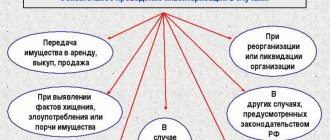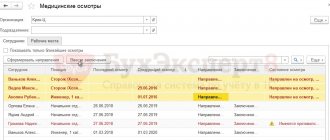The authorized capital of a joint-stock company reflects the valuation of shares. For accounting purposes, the share of each founder and the types of securities are of greatest importance. Based on these data, dividends are calculated and the rights of shareholders in managing the company are determined. Let's take a closer look at how the issue of shares is displayed in accounting (the entries that are used to account for corporate rights will not be ignored either).
Formation of the management company
The activities of joint-stock companies are regulated by Federal Law No. 208 of the same name. This law describes the procedure for creating and reorganizing companies, the rights and obligations of founders. According to Art. 7, in closed joint-stock companies shares are distributed only among participants. According to Art. 9, the founders enter into an agreement on the creation of a company, which specifies the procedure for carrying out activities, the amount of capital, types of shares, and the procedure for their payment. The first section of the liabilities side of the balance sheet is formed at the expense of the nominal value of the securities. It is the same for all ordinary shares. After state registration of a joint-stock company, 50% of the securities must be repaid within 3 months, and the rest within a year.
Accounting for the issue of shares
According to PBU, account 80 “Authorized capital” displays information on the composition and movement of capital. The balance corresponds to the volume of the company's own funds. The amount of debt of the founders is reflected by posting KT 80 DT 75-1. The receipt of money to pay for corporate rights is reflected in KT 75-1. Analytics is carried out for each participant.
In order for transactions on shares to fully reflect the rights of all founders, stages of capital formation and types of securities, it makes sense to open sub-accounts for account 80 that contain information about the movement of different types of capital:
- 80-1 “Announced” - used to reflect the nominal value of securities intended for sale.
- 80-2 “Subscription” - used for accounting for securities with subscription.
- 80-2-1 “Corporate rights of the first founder.”
- 80-2-n “Central Bank of the nth founder.”
- 80-3 “Paid” – the cost of redeemed securities.
Accounting for shares in accounting entries
There is no need to pay VAT when selling shares.
Thus, in the tax return it is necessary to indicate the costs of the purchase and income from the sale of shares only when the securities are sold. However, it is necessary to record data on the purchase price in accounting in any case.
Accounting for income from shares
If shares bring dividends to the holding company, they also need to be reflected in accounting. They are taken into account in:
- K 91 (“Other income and expenses”)
- D 76 (“Settlements with various debtors and creditors”)
Taxes on dividends must also be paid. However, you don't have to do this yourself. In this case, the tax agent will be the issuer (source of dividends). The tax is calculated from the date of receipt of funds to the shareholder's account.
Let's sum it up
Individuals do not need to report income from shares and fill out declarations themselves. This will be done by the broker - according to personal income tax (13% for residents, 30% for non-residents). Legal entities reflect transactions with shares in accounting, and in the tax return these figures are recorded only upon sale. Dividends on shares are also recorded in accounting. Taxes on dividends are paid by the tax agent (issuer).
Denis Cherepkov Head of Customer Service Department Freedom24.ru
The amount to be paid is determined by the enterprise independently and transferred to the federal budget along with documents for registration of the issue.
Example
The three founders decided to found a joint stock company. Capital in the amount of 800 thousand rubles. divided into 800 shares. Nominal value of the Central Bank: 800,000: 800 = 1000 rubles. Shares are distributed among the founders in the following proportions: 40%, 35% and 25%. When placing, 50% of the securities were paid. The remaining amount should arrive in three months.
For NU purposes, income in the form of property received as a contribution to the capital of an organization is not taken into account when determining the basis for calculating the NPP (Article 1 of the Tax Code of the Russian Federation). Let's display the issue of shares in accounting. The postings are presented in the table below.
| Operations | DT | CT | Amount (thousand rubles) |
| Registration of JSC | |||
| The management company is reflected in accordance with the charter | 75-1 | 80-1 | 800 |
| Payment of 50% of shares from the share of each participant | |||
| first (800 x 40%) second (800 x 35%) third (800 x 25%) | 50 | 75-1 | 160 140 100 |
| The report on the issue of the Central Bank was approved | |||
| The value of the shares is reflected: first founder second founder third founder | 80-1 | 80-2-1 | 320 280 200 |
| The cost of securities paid is reflected: by the first participant second participant third party | 80-2-1 | 80-3-1 | 160 140 100 |
| Accounting records for the payment completion date | |||
| Funds were received on account of the remaining portion of the Central Bank: first founder (320 -160) second founder (280 – 140) third founder (200-100) | 50, 51 | 75-1 | 160 140 100 |
| The cost of paid securities is reflected (for each shareholder) | 80-2-1 | 80-3-1 | 160 140 100 |
The accounting entries reflecting the issue of uncertificated shares are no different from those presented above. Confirmation of a contribution to the company is a certificate or an extract from the register of owners of securities.
Change in capital amount
Article 28 of Federal Law No. 208 provides for an increase in the capital stock of a closed joint-stock company through additional issue of shares. The corresponding decision is made at a meeting of shareholders. The number of additional shares, their type, method of placement, price, form of payment are also determined at the meeting of shareholders. Securities can be paid for in cash or property rights. In the second case, an independent expert is hired to evaluate the transferred property. Resolution No. 19 of the FC Central Bank regulates the issue of additional shares. Accounting entries are entered on the basis of a report on the results of the issue: the value of shares, their number and categories.
In the example discussed below, materials will be used to pay for securities. To account for them, the accounting system provides account 10 of the same name. If the placement price is higher than the nominal value of the securities, then the difference between the amounts received is charged to additional capital. Also in the example, the following postings for shares will be used:
- KT 80 DT 75-1 – increase in capital through the issue of shares.
- KT 83 DT 75-1 – creation of additional capital.
The nominal value of the issue is taxed at a rate of 0.8% (Federal Law No. 2023-1). The amount to be paid is determined by the enterprise independently and transferred to the federal budget along with documents for registration of the issue. In accounting, the accrual of tax on transactions with securities is reflected in the entry DT 91-2 “Other expenses”, CT 68 “Tax calculations”. State registration of the issue of additional shares is carried out if the number of subscribers exceeds 500.
Example of securities accounting
Securities, the information on which is presented above, can be divided into main and auxiliary. The first ones include shares and shares (account 58.1), and the auxiliary ones include the remaining papers (bills, checks, bonds, etc.) (account 58.2). Securities are primarily involved in the processes of acquisition, sale, disposal and accrual of interest. In some cases, it is possible to transfer and write them off.
Ordinary legal entities and entrepreneurs, as well as legal entities and individual entrepreneurs who are engaged in the movement of such securities at a professional level, can participate in the movement of securities on the market. In accounting, there are entire sets of operations for specific situations, where it is necessary to make a large number of transactions and identify absolutely all operations performed in a certain situation. Let's give an example involving securities.
The simplest example: a company purchased shares of a bank at a price of 1,500 rubles, although the par value of the shares was 1,000 rubles. The only forced expense is payment to the issuer. Meanwhile, the maximum maturity of bonds was only 2 years. The income on the bonds was paid to their owner every six months at a rate of 40% per annum. Next, we will create a table in which we will record all the operations that occurred in this situation.
| No. | The content of the action | Debit | Credit | Transaction amount |
| 1 | The value of the bonds is paid to their original owner (issuer) | 76 | 51 | 1500 |
| 2 | The book value of the bonds is reflected | 58.1 | 76 | 1500 |
| 3 | Dividends accrued | 76 | 91 | 300 |
| 4 | Dividends transferred | 51 | 76 | 300 |
| 5 | The share by which the bond price has decreased is reflected | 91 | 58 |
Similar transactions can occur with shares (which happens most often), and with bills, and with other types of securities. This example includes five transactions, but most often transactions in such examples can reach twenty. The main thing here is to correctly calculate the amount and debit with credit. In accounting, securities are reflected at their book value.
Example
The founders of the OJSC decided to increase the authorized capital by 0.5 million rubles by issuing 500 securities with a starting value of 1 thousand rubles. at a price of 1050 rubles. As a result of the issue, all shares were sold. Of these, 300 pieces were paid for in cash, and for the rest the JSC received materials worth 210 thousand rubles. We will display the issue of additional shares. Postings:
| Operation | DT | CT | Amount (thousand rubles) |
| Tax charged on transactions with the Central Bank (500 x 0.8%) | 90-2 | 68 | 4 |
| Money transferred to pay taxes | 68 | 51 | 4 |
| The money received from the founders in payment of the Central Bank was capitalized (300 x 1.05) | 50, 51 | 75-1 | 315 |
| Materials were capitalized to pay for shares | 10 | 75-1 | 210 |
| Increased capital | 75-1 | 80 | 500 |
| The amount of additional capital is reflected (300 x 1.05 + 210 – (500 x 1)) | 75-1 | 83 | 25 |
The contribution to the authorized capital can be paid using goods that have been previously assessed by an independent expert at market value. Let's look at how records are generated that reflect the accounting of finished products. Accounting entries:
DT 43 CT 20 – production of goods by the main (auxiliary, servicing) production.
Here's how an additional share issue is accounted for. The postings presented earlier can be used in case of payment of the contribution with other property, for example, OS.
Accounting
In accounting, reflect the increase in the size of the authorized capital as of the date of state registration of changes made to the organization’s charter. This is due to the fact that the amount of the authorized capital reflected in the accounting must correspond to its size recorded in the constituent documents of the organization (letter of the Ministry of Finance of Russia dated March 21, 2007 No. 07-05-12/03).
As of the date of the decision to place an additional issue of shares, no accounting entries need to be made.
To reflect the size of the organization’s authorized capital, use account 80 “Authorized capital”; to account for settlements with shareholders, use a special subaccount 75-1 “Settlements on contributions to the authorized (share) capital”.
The property that shareholders contribute in payment for additional shares should be taken into account at the cost determined by the board of directors (clause 3 of Article 34 of Law 208-FZ, clause 8 of PBU 5/01, clause 9 of PBU 6/01, clause 11 of PBU 14 /2007, paragraph 12 PBU 19/02).
When placing additional shares at the expense of shareholders, make the following entries in your accounting records:
Debit 51 (50, 08, 10) Credit 75-1
– funds (other property) were received from shareholders as payment for shares of an additional issue;
Debit 75-1 Credit 80
– the increase in the authorized capital at the expense of shareholders’ funds is reflected (as of the date of state registration of changes in the organization’s charter).
If the actual price of the issued shares exceeds their par value, the organization will generate share premium. To reflect the amount of the difference between the actual cost of placing shares and their nominal value, use special subaccount 83-1 “Share premium” (Instructions for the Chart of Accounts). Make an accounting entry for the difference:
Debit 75-1 Credit 83
– reflects the excess of the actual cost of placement of shares over their nominal value.
An example of increasing the authorized capital of an organization by additionally issuing shares at the expense of shareholders. Additional shares are paid for in cash at a price equal to their par value
The general meeting of shareholders of Alfa JSC decided to increase the authorized capital by additionally issuing shares at the expense of shareholders.
All shares are distributed by private subscription among shareholders at a price equal to their par value.
The company places 1000 ordinary shares, the par value of which is 200 rubles. per share. Shares are placed at a price of 200 rubles.
Shareholders pay for additional shares in cash.
The organization paid state duty in the following amounts:
– 400 rub. ((1000 pieces × 200 rubles) × 0.2%) - for registration of an additional issue of shares placed by subscription and a report on the results of the issue; – 800 rub. – for registration of changes in the charter.
Alpha's accountant made the following entries in the accounting.
On the date of receipt of money from shareholders:
Debit 51 Credit 75-1 – 200,000 rubles. (1000 pieces × 200 rubles) – funds were received from shareholders in payment for shares of an additional issue.
On the date of payment of the state duty for registration of an additional issue of shares and a report on the results of the issue:
Debit 68 subaccount “State duty” Credit 51 – 400 rub. – state duty has been paid to the budget.
As of the date of receipt of the notification of state registration of the additional issue of shares and the report on the results of the issue:
Debit 91-2 Credit 68 subaccount “State duty” - 400 rubles. – the cost of state duty is included in other expenses.
As of the date of payment of the state fee for registration of changes in the charter:
Debit 68 subaccount “State duty” Credit 51 – 800 rub. – state duty has been paid to the budget.
As of the date of receipt of the certificate of state registration of changes in the charter:
Debit 91-2 Credit 68 subaccount “State duty” - 800 rubles. – the cost of state duty is included in other expenses;
Debit 75-1 Credit 80 – 200,000 rub. – reflects the increase in the authorized capital of the organization.
An example of increasing the authorized capital of an organization by additionally issuing shares at the expense of shareholders. Additional shares are paid for in cash at a price exceeding their par value
Public joint-stock company "Proizvodstvennaya" decided to increase the authorized capital in the amount of 500,000 rubles. through an additional issue of 250 ordinary shares with a par value of RUB 2,000. per share.
The price for placing shares by open subscription is RUB 2,100. per share.
The organization paid state duty in the following amounts:
– 1000 rub. ((250 pieces × 2000 rubles) × 0.2%) – for registration of an additional issue of shares placed by subscription and a report on the results of the issue; – 800 rub. – for registration of changes in the charter.
The Master's accountant made the following entries in the accounting.
On the date of receipt of money from shareholders:
Debit 51 Credit 75-1 – 525,000 rub. (250 pcs. × 2100 rubles) – funds were received from shareholders to pay for additional shares.
On the date of payment of the state duty for registration of an additional issue of shares and a report on the results of the issue:
Debit 68 subaccount “State duty” Credit 51 – 1000 rub. – state duty has been paid to the budget.
As of the date of receipt of the notification of state registration of the additional issue of shares and the report on the results of the issue:
Debit 91-2 Credit 68 subaccount “State duty” - 1000 rubles. – the cost of state duty is included in other expenses.
As of the date of payment of the state fee for registration of changes in the charter:
Debit 68 subaccount “State duty” Credit 51 – 800 rub. – state duty has been paid to the budget.
As of the date of receipt of the certificate of state registration of changes in the charter:
Debit 91-2 Credit 68 subaccount “State duty” - 800 rubles. – the cost of state duty is included in other expenses;
Debit 75-1 Credit 80 – 500,000 rub. (250 pcs. × 2000 rub.) – reflects the increase in the authorized capital;
Debit 75-1 Credit 83 – 25,000 rub. (RUB 525,000 – RUB 500,000) – reflects the excess of the actual cost of placement of shares over their nominal value.
Reflect the increase in the authorized capital at the expense of the organization’s own property with the following entries:
Debit 83 Credit 80 – reflects the increase in the authorized capital due to the additional capital of the organization;
Debit 84 Credit 80 – reflects the increase in the authorized capital due to retained earnings of previous years.
An example of increasing the authorized capital by additionally issuing shares at the expense of the organization’s own property (retained earnings from previous years)
The general meeting of shareholders of Alfa JSC decided to increase the authorized capital by additionally issuing shares at the expense of the organization’s own property - retained earnings from previous years.
All additional shares are distributed among shareholders in proportion to the number of shares owned by each of them.
The company places 2,000 ordinary shares, the par value of which is 100 rubles. per share.
The organization paid state duty in the following amounts:
– 20,000 rub. – for registration of an additional issue of shares and a report on the results of the issue; – 800 rub. – for registration of changes in the charter.
Alpha's accountant made the following entries in the accounting.
On the date of payment of the state duty for registration of an additional issue of shares and a report on the results of the issue:
Debit 68 subaccount “State duty” Credit 51 – 20,000 rub. – state duty has been paid to the budget.
As of the date of receipt of the notification of state registration of the additional issue of shares and the report on the results of the issue:
Debit 91-2 Credit 68 subaccount “State duty” - 20,000 rubles. – the cost of state duty is included in other expenses.
As of the date of payment of the state fee for registration of changes in the charter:
Debit 68 subaccount “State duty” Credit 51 – 800 rub. – state duty has been paid to the budget.
As of the date of receipt of the certificate of state registration of changes in the charter:
Debit 91-2 Credit 68 subaccount “State duty” - 800 rubles. – the cost of state duty is included in other expenses;
Debit 84 Credit 80 – 200,000 rub. (2000 units × 100 rubles) – reflects the increase in the authorized capital due to retained earnings of previous years.
Include the state duty for registration of changes in the charter, additional issue of shares and report on the results of the issue as part of other expenses (clause 11 of PBU 10/99). For the amount of state duty paid, make the following entries in your accounting:
Debit 68 subaccount “State duty” Credit 51 – state duty was transferred to the budget;
Debit 91-2 Credit 68 subaccount “State duty” - the cost of the state duty is charged to other expenses.
The procedure for accounting for an increase in the authorized capital due to additional placement of shares when calculating taxes depends on what taxation system the organization uses.
Reduction of capital
The authorized capital can be reduced by changing the par value or repurchasing its own securities in order to reduce them. At the same time, the new amount of own funds should not be less than that provided by law. If the first method is used, then additional shares are issued, the transactions for which will be discussed further, of a lower value, which are converted into outstanding securities. Based on the issue report, changes are made to the charter. At the same time, the amount of the issue of the Central Bank, which is intended to reduce the capital, is not subject to taxation.
Example
By decision of the founders, the charter capital of the OJSC is reduced by 300 thousand rubles through the conversion of securities. The difference between the nominal and market values is paid to the founders upon issue. The transfer of money is carried out by an agent whose services cost 12 thousand rubles including VAT. We will display the issue of additional shares in the accounting system. Postings:
| Operation | DT | CT | Amount (thousand rubles) |
| Amount to be paid upon conversion of shares transferred to the agent | 76 | 51 | 300 |
| Disbursement to shareholders | 75-1 | 76 | 300 |
| Agent's remuneration (including VAT) | 91-2 | 76 | 12 |
| Payment for agent services has been transferred | 76 | 51 | 12 |
| Reflected decrease in capital | 80 | 75-1 | 300 |
Bond Accounting Rules
Accounting rules are approved in “Accounting for expenses on loans”. The debt to the bond owner is indicated as a loan obligation. For correspondence, accounts 66 and 67 are used. Which account should be used? This is determined by the type of debt on the bonds: short-term or long-term. For short-term debts, account 66 is used, and for long-term debts, account 67. Consider the types of accounting entries:
- DT76 KT51. Buying bonds.
- DT91.2 KT58.2. Debt identified.
- DT91 KT58.2. Amortization.
- DT58.2 KT91. Write-off of the difference between the initial and nominal valuation of securities.
- DT51 KT62. Receiving payments on papers.
If the funds paid are greater than the nominal value of the security, the amount of the difference is included in the structure of other income.
Cancellation of the Central Bank
When an organization repurchases its own shares in bookkeeping, a difference may arise between the nominal price and the actual price paid. It is taken into account under article 80 (if the price is below the face value) or as part of own funds (if the price is above the face value), as well as under the article “Other monetary documents” (account 56). Most often, securities are purchased at a reduced value. Let's look at standard wiring:
- DT56 KT50(51) – the cost of the costs of repurchasing shares is taken into account.
- DT56 KT80 - excess of the nominal value over the redemption value.
- DT88 KT56 - excess of the redemption value over the nominal value.
If securities are purchased for the purpose of cancellation, then the following transactions are generated:
- DT80-3 KT80-1 – reduction in the cost of paid-in capital.
- DT80-1 KT56 - amount of canceled shares (entry is generated after amendments to the charter)
or:
- DT48 KT56 - reflects the par value of the securities sold.
- DT51(50) KT48 - cash was received as payment for the shares sold.
- DT48(80) KT80(48) – profit (loss) was received from transactions with the Central Bank.
simplified tax system
Organizations applying the simplification do not include the cost of additionally received shares and share premium from their placement in taxable income (subclause 1, clause 1.1, article 346.15, subclause 3, clause 1, article 251 of the Tax Code of the Russian Federation).
Organizations that pay a single tax on the difference between income and expenses cannot include the cost of property contributed as payment for shares as expenses. For more information about this, see How to take into account the receipt of fixed assets and intangible assets using the simplified tax system, How to write off material expenses using the simplified tax system.
The amount of state duty paid for registering an additional issue of shares, a report on the results of the issue and making changes to the charter, organizations that pay a single tax on the difference between income and expenses, have the right to take into account in expenses (subclause 22, clause 1, article 346.16 of the Tax Code of the Russian Federation) . Include the amount of the state duty in expenses at the time of its payment to the budget (clause 2 of Article 346.17 of the Tax Code of the Russian Federation).
Reorganization
Sometimes it may be necessary to change the par value of shares through splitting or consolidation. If the amount received clearly corresponds to the size of the capital account, no additional entries are generated in the accounting system. Changes are made only to the register of shareholders. If the size of the management company is not clearly divided by the number of new founders (for example, with a capital of 6 thousand rubles, the number of securities is reduced from 300 to 25), then changes are made to the charter documents and an additional issue of shares is formed. The wiring used is similar to that shown above.






